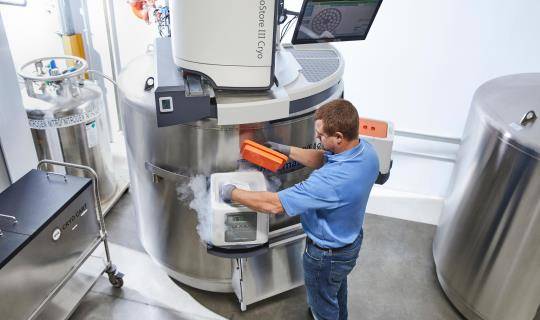Is a contact-free clinical trial possible?
By Mike Sweeney, Kim McLeod, MPH
Since the COVID-19 pandemic began, the healthcare industry has seen its share of surprises — including the sudden emergence of virtual everything. But there's one part of the pharma supply chain where we've heard a resounding "we're ready" when it comes to moving medicine forward with remote solutions.
World Courier's Mike Sweeney and Xcenda's Kim McLeod share their insights on how the two businesses were already prepared to meet manufacturer's needs when COVID-19 made it necessary to adopt new methods of reaching patients for drug studies — albeit with solutions that address different ends of the research spectrum. Here, they share perspective on the future of data collection and how to adapt clinical trial logistics in light of COVID-19.
Q: Patient recruitment is a challenge even when we aren't in the midst of a global pandemic. What innovative methods can trial sponsors consider to find patients and continue research now that we're seeing even higher drop-off and potential research site closures due to COVID-19?
Mike Sweeney: Recruiting the targeted number of eligible patients for a clinical trial can require a substantial investment of time and money. Offering patients an in-home treatment option helps overcome many of the objections normally associated with participating in a clinical trial. Direct-to-patient (DtP) services can address the factors that make recruitment for any trial challenging: proximity, accessibility and schedule availability. And the reasons for adopting it as a model are amplified in the current context. Overall, the patient mindset is shifting, and sponsors want to support that. They want to make life easier for the patients who are unable or unwilling to enter healthcare settings.
Kim McLeod: At the post-approval stage, innovative manufacturers may consider virtual patient recruitment for observational, real-world studies. For this type of study design, electronic health record (EHR) data can be queried to identify potentially eligible patients. Then, a health system and CRO can work together to perform digital recruitment outreach to those patients. All patient-reported data is collected via online portal during the follow-up period. No in-person physician visits are required and all patient-reported data, EHR and claims data can be linked together into one study database. This approach can be used to define real-world drug use, including clinical outcomes, treatment patterns, burden of disease and even the impact on healthcare resource utilization.
Q: Are there specific products or disease states where “going virtual" makes more sense?
MS: DtP is most suitable for rare diseases, but beyond that it can work for any therapeutic area. Everything from mental health to oncology or neurology. What we've seen during COVID-19 is DtP being utilized for more drugs that don't require temperature control. Generally, though, we recommend manufacturers/trial sponsors ask themselves a few questions to vet whether or not their product is a fit for DtP:
- Are any known or inherent risks likely in the patient's response to the drug?
- Is there sufficient product stability data to ensure it can safely be transported and stored (at home) at the correct temperature?
- Can the product be self-administered, or administered by a home healthcare professional?
- Can the visit schedule/administration be continued at home without interruption?
KM: When you're looking at collecting data for rare disease, a qualified partner like Xcenda can leverage relationships with IDNs, GPOs and clinical site networks to access physicians that other study partners may not be able to reach in order to identify viable patients. They can also provide guidance on what data to pull, as not everything on record is necessarily relevant strategically for a product launch.When products are already in market, virtual solutions are useful when the patient population is small and spread out across the country or even the globe. It's traditionally hard to find these patients with these serious conditions, especially in a concentrated geographic location.
Q: How realistic are these solutions? Are you seeing pharma companies ask for them?
MS: World Courier has been actively offering DtP for years, but by the end of April we had seen the volume of our daily DtP shipments increase by five times that of the pre-COVID average. We're also seeing more flexibility from regulators on "alternative secure delivery methods" as they prioritize patient safety. We should expect there to be lasting ramifications for the supply chain as a result of this pandemic, and the impact of DtP is one of those. Though there is debate across pharma about the upfront cost, it's important to look at the opportunity to create value through this solution in the medium and long-term — for patients, sponsors and the healthcare system.
KM: Not only realistic, but incredibly relevant right now. The coronavirus pandemic has forced healthcare and pharma to be more innovative. If we don't pioneer some of these methods, we won't be able to recruit patients — especially for some of the investigational drugs that we can't halt research on.
We're being approached to help manufacturers complete that RWE piece of the study already. Telemedicine is bridging the gap too. There are so many solutions that no one would have been brave enough to try before COVID-19 forced us into new ways of thinking. A lot of our manufacturer partners can't afford to wait and see how it works for someone else.

.jpg?h=140&iar=0&w=140&useCustomFunctions=1¢erCrop=1&hash=E51E0D7ED6E4FDC9A7A60BC6551BD6BD)



